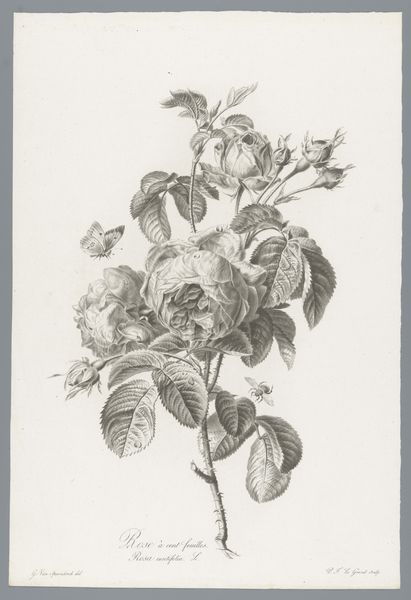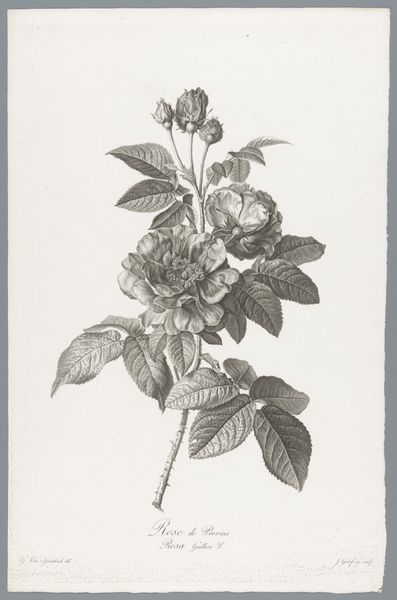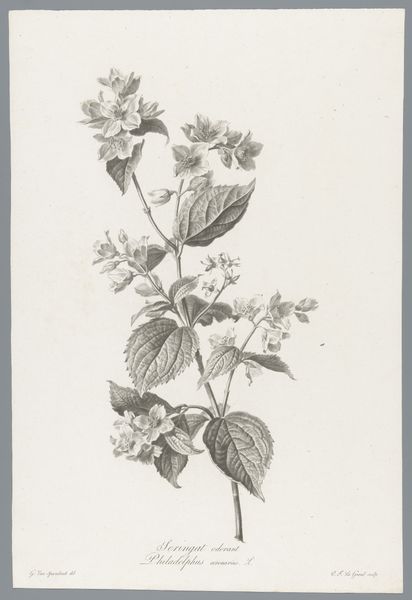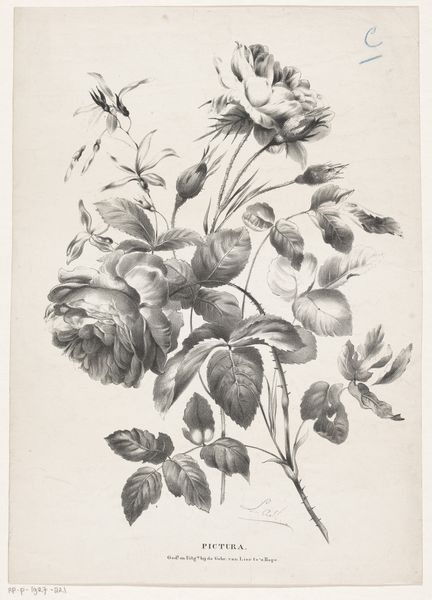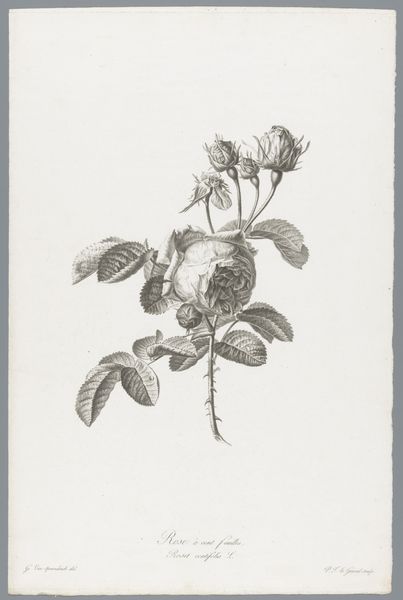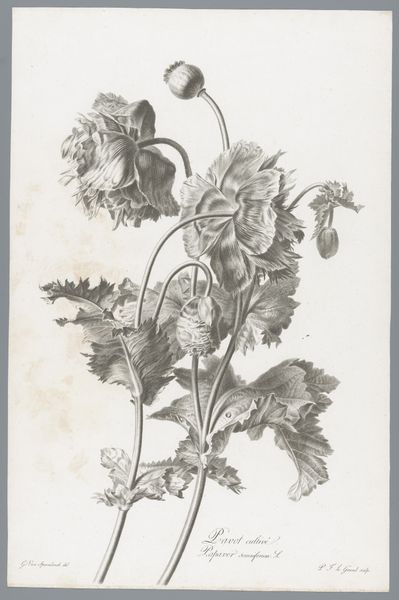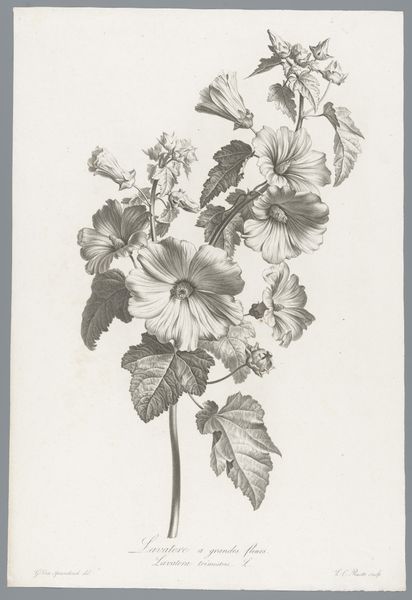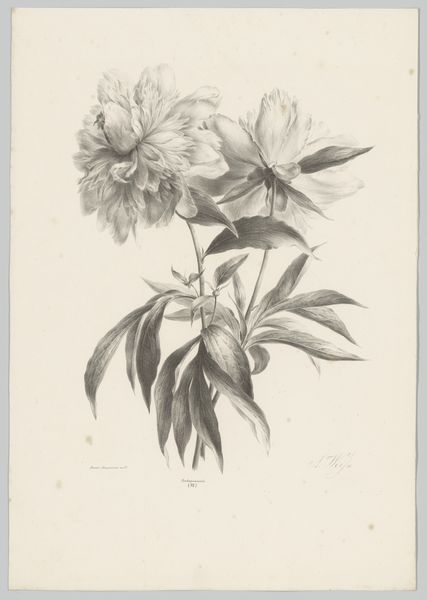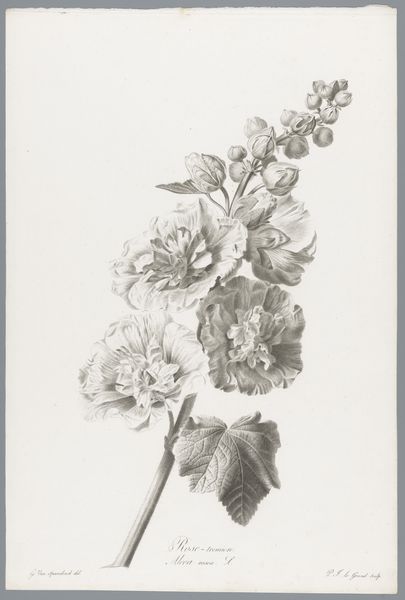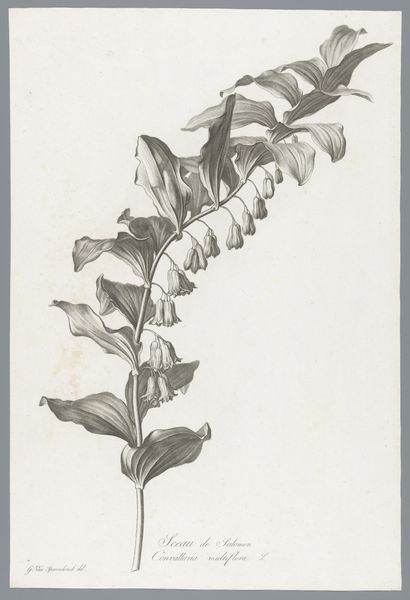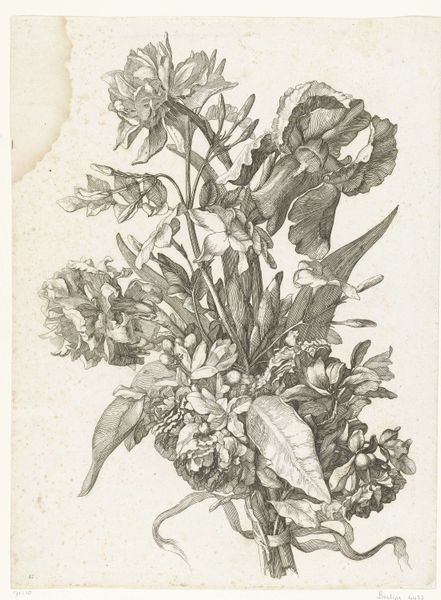
drawing, graphite
#
drawing
#
botanical illustration
#
botanical drawing
#
graphite
#
academic-art
Dimensions: height 502 mm, width 329 mm
Copyright: Rijks Museum: Open Domain
Curator: Before us is a graphite drawing entitled "Goudsbloem," created between 1799 and 1801 by Pierre François Legrand. Editor: It's surprisingly delicate. For a botanical study, I'd almost expect more scientific detachment. There's a softness here, a rendering of light that feels almost… romantic. Curator: Indeed. The Goudsbloem, or marigold, carries potent symbolism. Its golden petals are associated with the sun, warmth, and even resurrection in some traditions. The painstaking detail also suggests it was meant to represent inherent ideas around immortality and longevity. Editor: That dedication to detail—it must have been incredibly time-consuming! Imagine the hours bent over the paper, carefully building up the shading, one tiny stroke at a time. I'm struck by the labor, and even the cost, of acquiring that level of skill and the graphite needed. Not exactly accessible art. Curator: You are right. There's certainly a layer of social meaning embedded in the material. Also consider how botany and illustration were intertwined then – observing, documenting, ordering the natural world. This drawing serves both artistic and scientific purposes. Editor: And those broad leaves—they seem almost to cradle the delicate blooms. Is that an intentional visual cue, do you think? It's beautiful, the texture achieved with graphite is interesting. The contrast in surfaces really enlivens it. Curator: I believe so. There is a sense of shelter, protection. And in folklore, marigolds were used as protective amulets to ward off evil spirits and promote prosperity. So the artist might have consciously amplified this by this sort of nesting composition. Editor: It’s compelling how this artwork can lead into so many different ways of viewing, ranging from folklore to material production. Curator: And so ends our reflection on "Goudsbloem". Let us appreciate art as material and metaphor, interwoven in their significance.
Comments
No comments
Be the first to comment and join the conversation on the ultimate creative platform.
